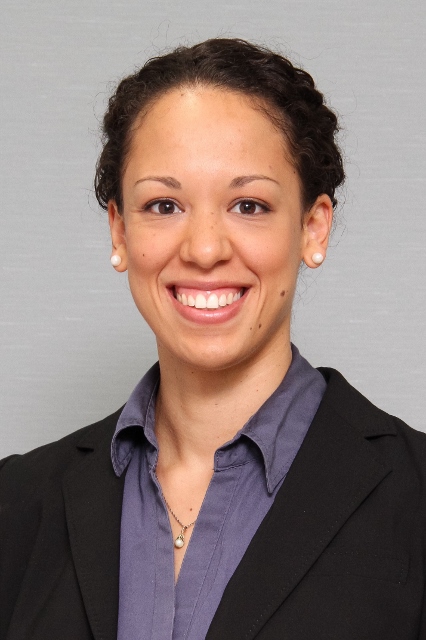|

Rebekka Eckhaus
|
|

Joachim Castellano
|
As teachers, we are always trying to find ways to make our
feedback more useful for our students. However, the realities of the
classroom often pose significant challenges, especially if we want to
tailor our feedback to the individual needs of our students. We may be
faced with large numbers of students, inconsistent student attendance,
limited classroom time, or a lack of face-to-face time with our
students.
In response to these potential hurdles, we explored feedback
methods that would utilize time outside of the classroom so that
in-class time could be dedicated to activities requiring face time with
the instructor. Applying screen capture technology to provide feedback
to video recordings of student presentations allowed us an opportunity
to not only better reach students with various learning styles, but also
improve the quality of our presentation feedback. Building on research
investigating varied modes of presentation feedback (De Grez, Valcke,
& Roozen, 2009; Mayer, 2001, as cited in De Grez, Valcke,
& Roozen, 2009; Kırkgöz, 2011; Silva, 2012; McNulty &
Lazarevic, 2012), our goal was a method of feedback that was effective
and easy for students to understand so that they could directly
implement the suggestions as they developed their presentation
skills.
To this end, we designed an action research project utilizing
screen capture technology to provide multimodal feedback in the form
video, audio, and text output, as well as to instantaneously connect the
instructor’s feedback to the student’s presentation behaviors in one
“master video.” In Eckhaus & Castellano (2014b), we developed
the process for implementing the screen capture feedback
method. Then, based on initial student surveys and instructor input, we
further refined the method to make it more effective and user friendly
(Eckhaus & Castellano, 2014a). The final stage of this project
shares practical tips for teachers, as well as students’ opinions about
the value of using this method.
Screen Capture Process
There are several technical advantages of using screen capture
for presentation feedback. It provides a rich, multimodal experience to
enhance comprehension and reinforce teachable moments. Students can hear
their teacher’s voice for aural feedback. By virtue of being a video
file, students can both see their actual performance and read text
comments. The cursor itself can pinpoint exact areas for students to
focus on. Finally, integrated feedback videos also allow student control
through the video player’s playback mechanism.
The screen capture process itself is the easiest method
involving technology. First, it does not require feature-heavy video
editing software such as iMovie. While modern Apple computers come with
Quicktime screen capture software built in, free screen capture
software, such as Ezvid, for Windows PC can be freely downloaded. Second,
teachers do not need to use
expensive, professional equipment for recording video. A serviceable
video can be produced with a consumer camera or smartphone. A few simple
tips can improve the quality of the video. For instance, placing the
camera closer to the subject instead of relying on a camera’s zoom
feature will result in clearer audio. Using any tripod provides image
stabilization. Please refer to Eckhaus and Castellano (2014a) for
step-by-step details on how to produce a screen capture feedback video
via Mac or Windows PC.
Findings and Results
Data gathered from multiple EFL classes in 2014 suggest
positive reception from students who received presentation feedback via
screen capture video files. Compared with traditional feedback methods
such as written feedback from the teacher or classmates, a majority of
students preferred either video feedback from the teacher or multiple
forms of feedback that included video. More students found that selected
moments of the presentation, a highlight reel per se, were more helpful
than the complete video without feedback.
From our experience, there are several steps that should be
taken to maximize the presentation feedback process. First, have
students assess themselves. This will prepare students for constructive
feedback. While watching their classmates’ presentations, have students
in the audience identify target areas: strengths and areas for
improvement. In this case, we limited feedback focus to language,
delivery, and content. After the presentation, have students assess
their own performance, and this data could help guide/focus instructor
feedback. Try to find common themes among all these written forms when
preparing your own teacher feedback. Finally, data showed that students
appreciated having both video types shared: the original student
presentation (complete and uncut) in addition to the integrated feedback
video.
As we worked on refining the screen capture feedback process,
we were also faced with practical challenges. The process itself can be
time consuming because each video must be made in real time, so it is
more helpful to target the key areas the student has identified and
address moments that would best illustrate those issues rather than
record feedback about the entire presentation.
Moreover, depending on the instructor’s level of technical
expertise, it could take some time and effort to learn the procedure.
Teachers must factor in their own learning time to maximize the benefit
to the students. Encouraging student involvement in the process by
having students record and upload their own videos will promote learner
autonomy. In this way, students may feel more positive about being
recorded and watching themselves on video.
The videos can also be used as additional classroom tools.
Surveys indicated that students feel that their peers are unable to give
valid feedback. However, both the feedback videos and the uncut
versions could be used as tools to help norm the peer feedback, which in
turn would give students a deeper understanding of the presentation
skills being taught. In fact, instructors could create video libraries
of student presentations that may be used to teach skills, not only as
feedback tools. Most important is to focus on the teaching of the
presentation skills beforehand, especially for students who are shy
about being recorded. We found that sometimes less is more, so using
video feedback one to two times during the semester may be more
effective than after every presentation opportunity.
Integrated video created by screen capture provides precise
feedback to student presentations. Students no longer have to guess
about their presentation grades. Instead, they are provided with a
teachable tool that they can control and review. Screen capture software
provides a straightforward procedure that lacks the complexity of
typical video editing software. Furthermore, feedback forms and student
involvement could ease the production burden on the teacher. Although
this process might be time consuming, our data showed that students
valued these videos. Such a useful feedback instrument seems well worth
the effort.
References
De Grez, L., Valcke, M., & Roozen, I. (2009). The
impact of an innovative instructional intervention on the acquisition of
oral presentation skills in higher education. Computers
& Education, 53(1), 112–120.
Eckhaus, R., & Castellano, J. (2014a) Applying screen
capture presentation feedback in the classroom (pp. 1454–1459). ICERI2014 Proceedings.
Eckhaus, R., & Castellano, J. (2014b). Using screen
capture to give meaningful feedback on presentations (pp. 1633–1637). INTED2014 Proceedings.
Kırkgöz, Y. (2011). A blended learning study on implementing
video recorded speaking tasks in task-based classroom instruction. TOJET: The Turkish Online Journal of Educational Technology,
10(4), 1–13.
McNulty, A., & Lazarevic, B. (2012). Best practices in
using video technology to promote second language acquisition. Teaching English with Technology, 12(3),
49–61.
Silva, M. L. (2012). Camtasia in the classroom: Student
attitudes and preferences for video commentary or Microsoft Word
comments during the revision process. Computers and
Composition, 29(1), 1–22.
Rebekka Eckhaus is currently a language lecturer at New York University School of Professional Studies - American Language Institute Tokyo Center, where she coordinates the Professional English program. She has taught in universities and companies in New York City, Tokyo, Seoul, and Valparaiso (Chile). Her research interests include learner autonomy and blended learning, especially in the area of ESP. Joachim Castellano is an educational technologist at the University of Notre Dame's Center for the Study of Languages and Cultures. He specializes in computer-assisted language learning (CALL) and media literacy. He has taught extensively at Japanese universities and was the recipient of the
2013 Apple Distinguished Educator - Japan award. |

